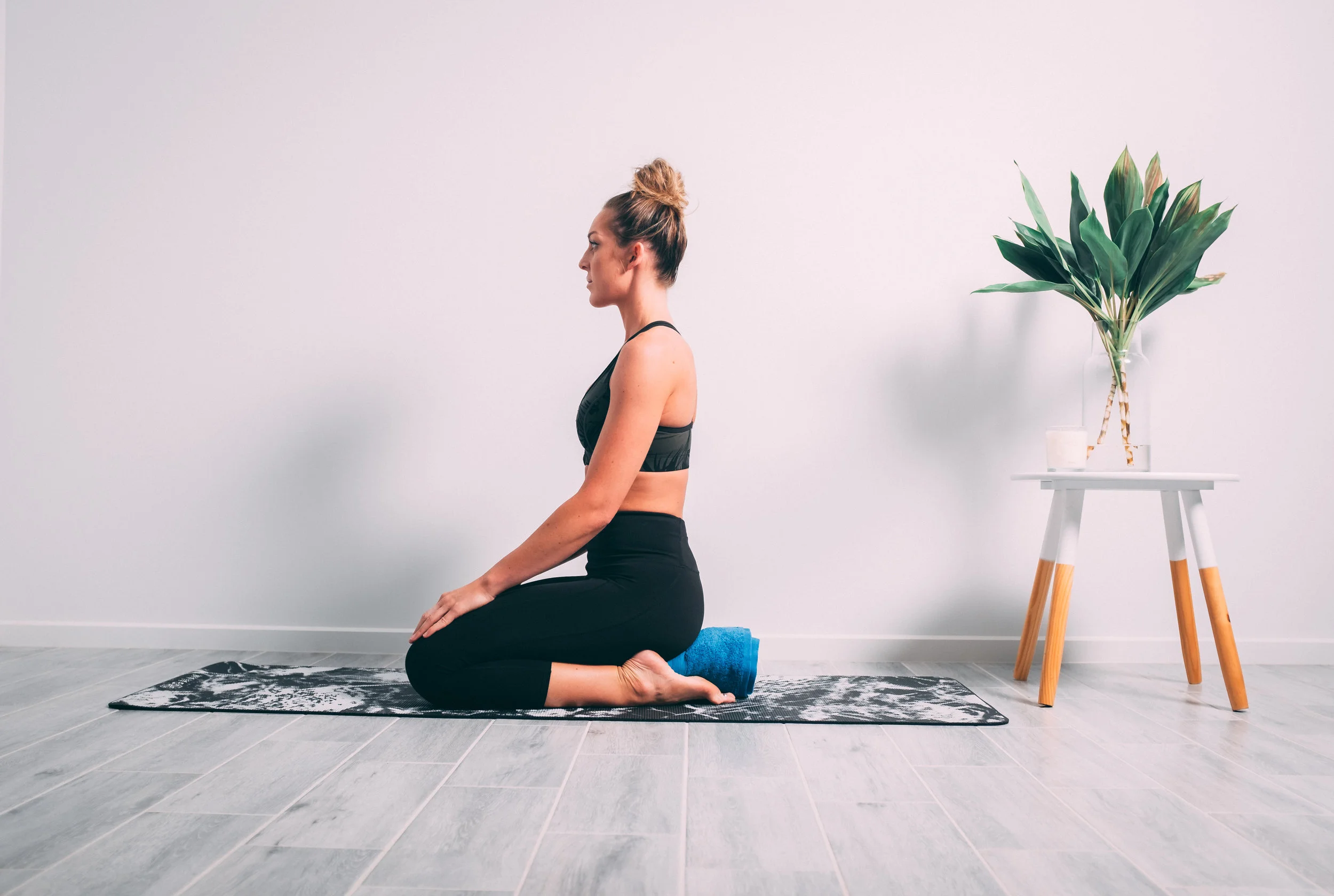Our 5 step process to rocking control over your pelvic floor
Starting with guided imagery and breath work to a lot of people can seem very “woo woo”. I can assure you that pelvic floor exercises are prescribed by the very best of Western GP’s, Gynaecologists and Obstetricians. However, without a strong grasp over your own internal compass, you will never succeed with pelvic floor muscle training. In my experience, women who skip this important stage or move too quickly through mental retraining often will get poorer results long term.
We start with breath work and awareness as this improves motor control/planning and gives greater mind control over the muscle. The theory is that you increase the amount of messages reaching the muscle via the nerves, thereby allowing for a stronger contraction of the muscle. Because you cannot see the pelvic floor, it is SO important to tap into your intuition and internal compass so that you can find heightened awareness of how to control and feel the muscle at work. Where your mind goes your energy flows, embrace this!
A strong awareness and control of the pelvic floor can be beneficial for a whole list of things including sexual arousal, delivering a baby and holding in wee or wind when you need to go to the toilet.
Step One: Position
Start in a sitting position on a chair or the floor. Your legs can be crossed or you can be kneeling. Place a small rolled up towel in between your legs so you feel a gentle pressure on your perineum (the space between vagina and anus!)
Step Two: Attention
Close your eyes and take your attention down to your perineum. Can you feel the gentle pressure of the towel? Can you feel blood flow? Can you feel a warm sensation? Does it feel tight? Or painful? Tilt your hips forwards and backwards and see if this sensation changes. There is no right or wrong answer here, just be curious to what you can feel.
Step Three: Breathe
Keeping your eyes closed, place your hands on your belly. Take a slow deep breath in, drawing air into your belly and feeling your tummy expand as your gently breath in. Exhale slowly and feel your tummy and hands relax down. Do this 5 times. Once you are breathing slowly and deeply take your attention down to your perineum again and just observe the feelings you get in this area as you breathe in and out.
Step Four: Squeeze
After a few breaths and some attention work, now we can try to squeeze the pelvic floor.
Keeping your tummy relaxed and leg muscles relaxed try to squeeze the pelvic floor gently, picturing that you are trying to bring your vagina and anus closer together. You should feel a gentle squeeze/tightening of the muscles around your vagina and anus, as well as a gentle lift. Now relax the muscles and pay attention to the feeling of “letting go”/ a drop or your pelvic floor melting into the surface you are sitting on.
Some common mistakes at this step:
Holding your breath
Sucking your tummy in
Squeezing your abs and legs/bottom cheeks
Pushing down like you are trying to do a poo
If you don’t feel anything you can head to our blog post “a list of pelvic floor analogies when picturing stopping your urine just doesn’t work” *Link to blog*
Step Five: Move
Now try this same visualisation and squeeze relax exercise in 3 more positions:
Crook lying (on your back, with knees bent and feet flat)
Childs pose (on your knees folded forward with arms out)
Lying butterfly (on your back with feet touching and knees out like a frog)
These positions put different parts of the pelvic floor and surrounding muscles on stretch and often many of my clients find one of these positions to be their “lightbulb moment”. Even if you are confident with your pelvic floor it can be very interesting to pay attention to the sensation and control you get over your pelvic floor in different positions. This can be very useful as an athlete (who needs their pelvic floor to be coordinated in various pelvic positions) as well as for sexual arousal in different positions.
Don’t forget, if you can’t do it or if you aren’t confident make sure you seek help! A Women’s health physio can help you identify what you are doing right/wrong. Or alternatively start the conversation with your GP or obstetrician or gynaecologist.
Happy exercising!


